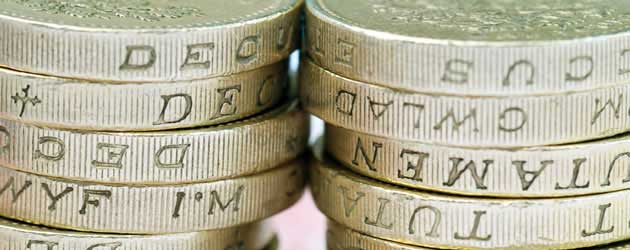
The Pound to Euro exchange rate (GBP/EUR) stooped to a 2-month low of 1.1648 yesterday afternoon as investors reacted to a remarks from European Central Bank policymaker Ewald Nowotny suggesting that the ECB is not considering cutting interest rates.
Speaking to journalists in Vienna the Austrian Central Banker said:
“I do not think that having a negative deposit rate is a realistic perspective, but I also do not see a realistic perspective of lowering the main policy rate.”
Nowotny also mentioned that people may have to come to terms with a strong Euro exchange rate, despite the problems that it can cause for weaker Eurozone economies. These problems include issues of competitiveness, because a strong Euro makes exports more expensive to foreign buyers.
Just last week French Finance Minister Arnaud Montebourg called upon the ECB to curb the single currency’s recent gains – EUR/USD has risen 8% since the start of July. However, Nowotny’s assertion that the ECB doesn’t have “any instruments” to halt the Euro’s rise appeared to snub the French Finance Minister’s request.
Nowotny’s hawkish comments sent the Euro higher by around 0.3 cents against the Pound to reach a 2-month high.
The single currency initially rallied by around half a cent against the US Dollar in response to the remarks, but EUR/USD ran into technical resistance and swiftly gave back its gains. The Euro to US Dollar exchange rate is currently very close to the near-2-year high of 1.3833 that it struck last Friday.
In Britain yesterday it was reported that UK Mortgage Approvals increased at their fastest rate for over five years during September, printing stronger-than-expected at 66,700. Despite registering the best score since the financial crisis, the housing market figures did little to support the Pound.
Later this evening the Federal Reserve is widely expected to maintain its ultra-low 0.25% interest rate and refrain from modifying its $85 billion per month asset purchasing scheme.
The US Central Bank seemed to be on the verge of reducing the QE3 monthly target in September, but a slight drop-off in economic data persuaded officials to remain on the sidelines. The 16-day government shutdown earlier this month, which is estimated to have cost America -0.6% of GDP in the fourth quarter, makes it even less likely that the Fed will taper before the end of 2013.
Subsequently, traders will be scouring the FOMC statement for signs of future policy direction: any indications that the Fed is still keen to taper – however unlikely – will bolster demand for the ‘Greenback’, however, any dovish remarks could send the US Dollar spirally downwards against the majors.

Comments are closed.